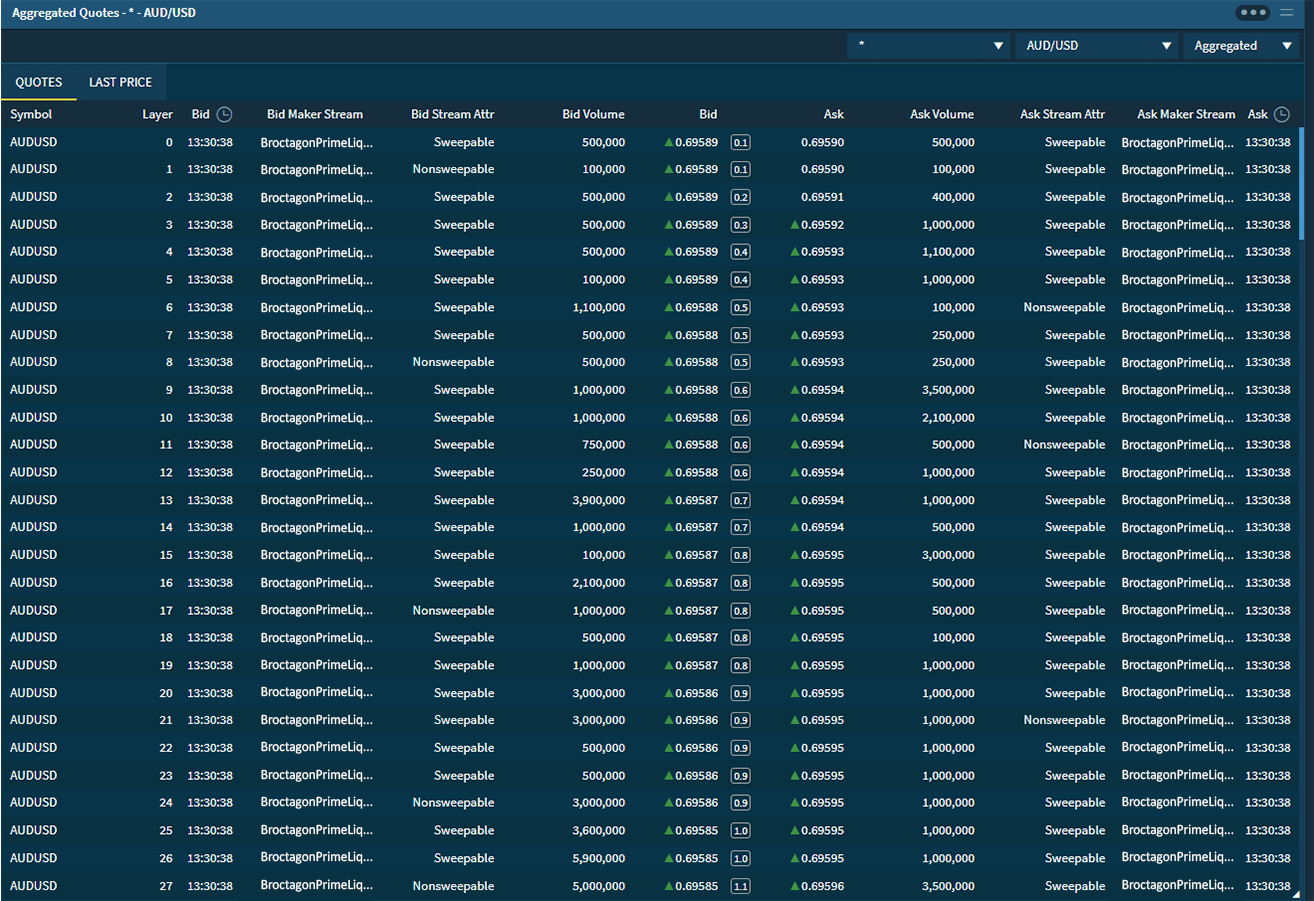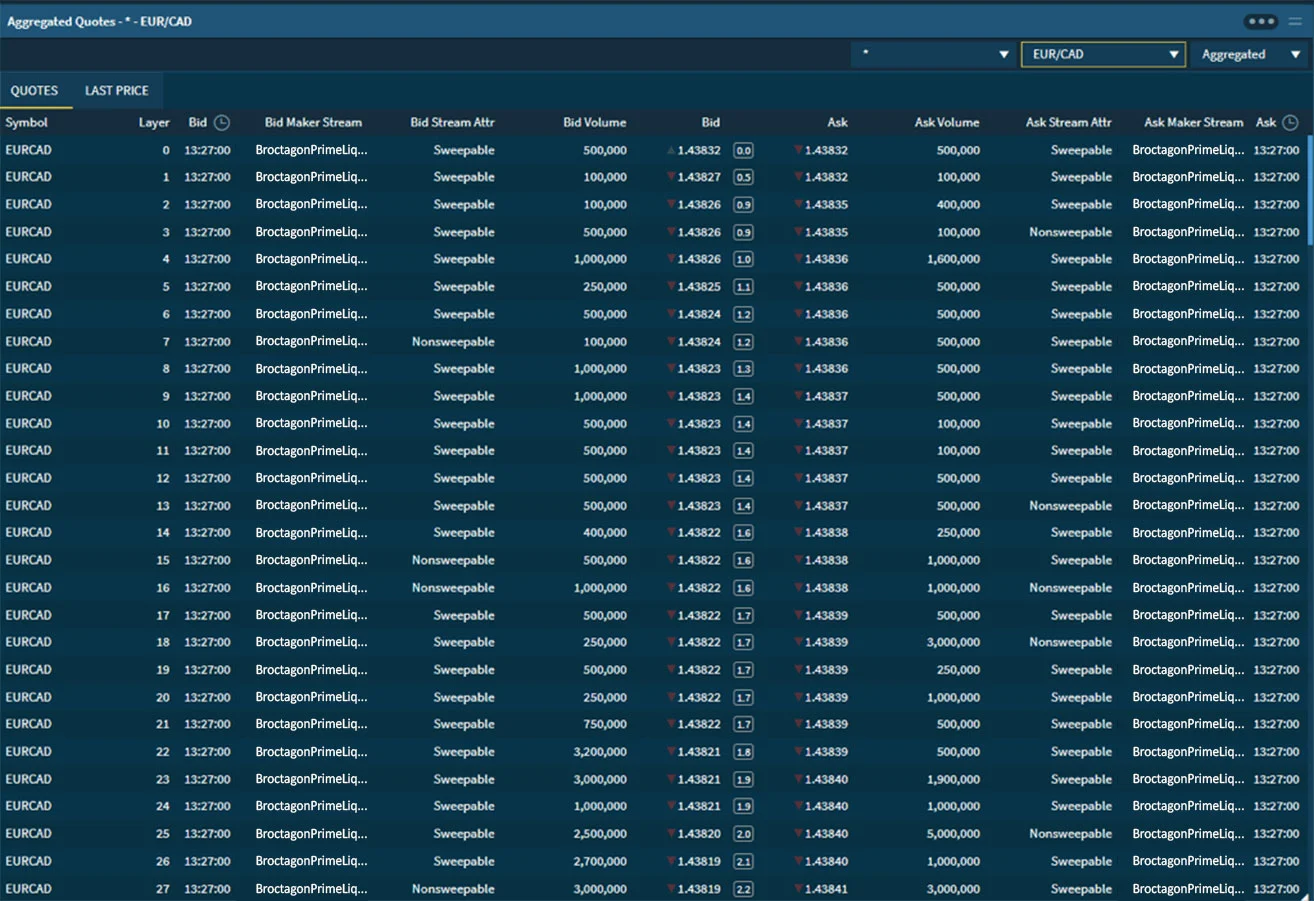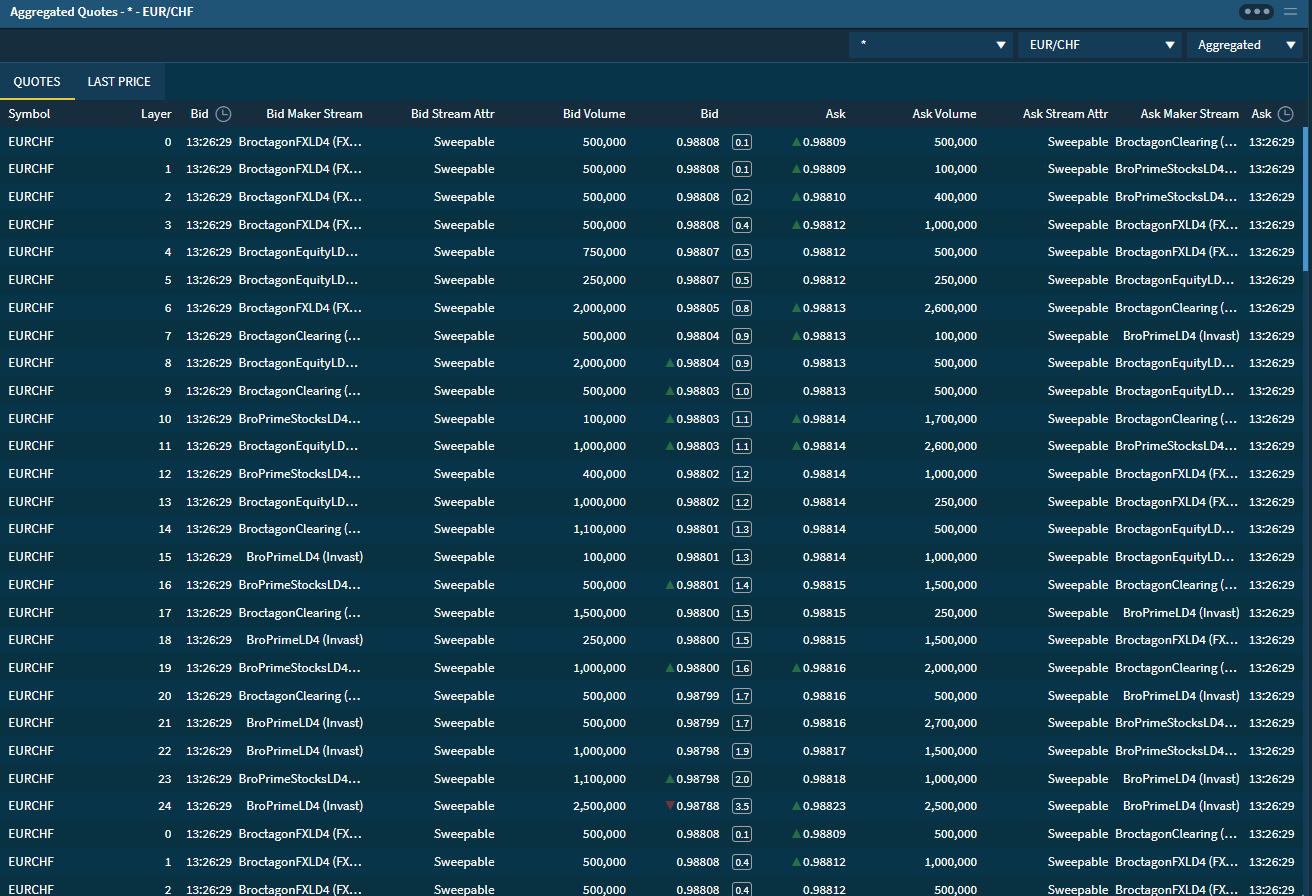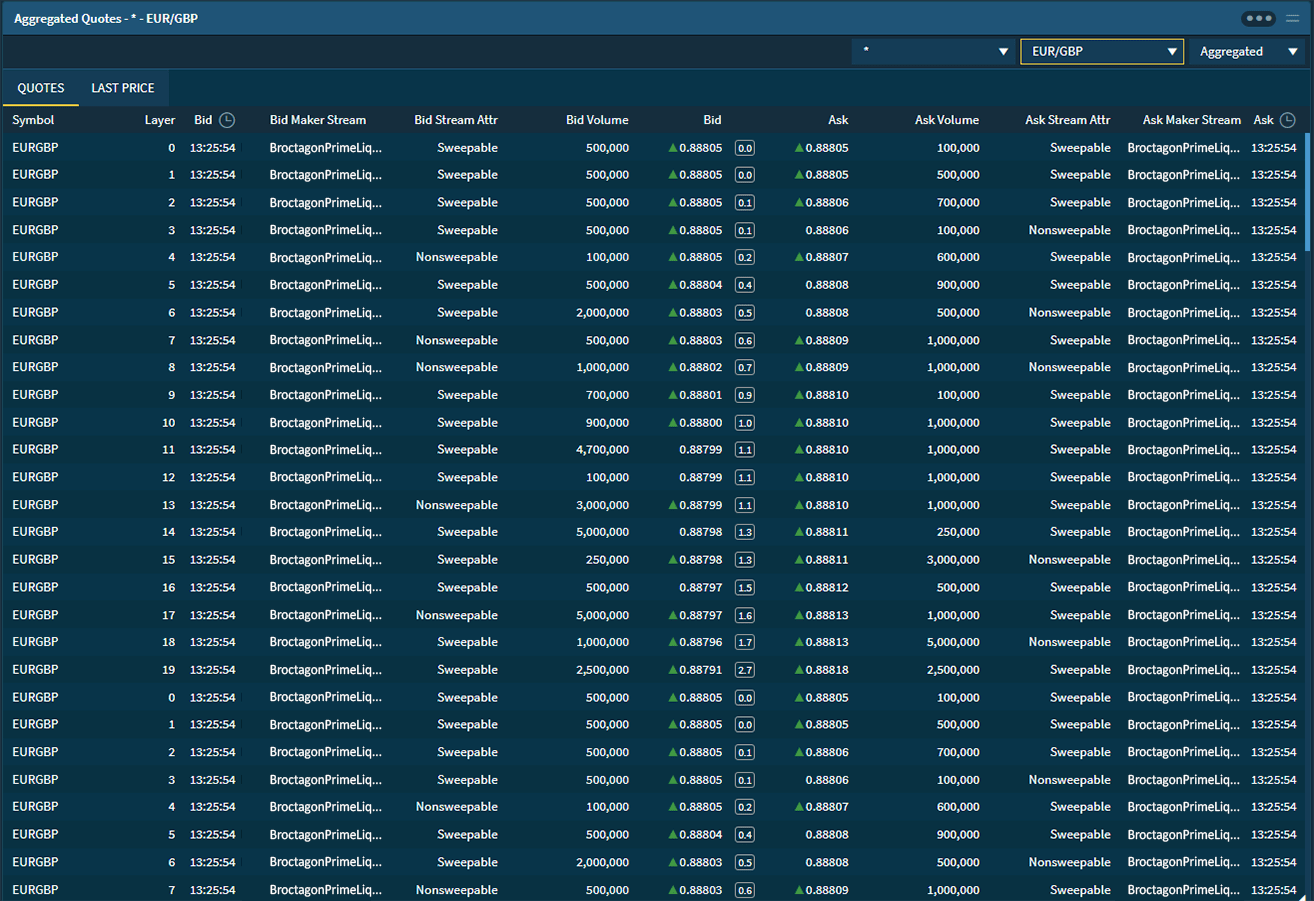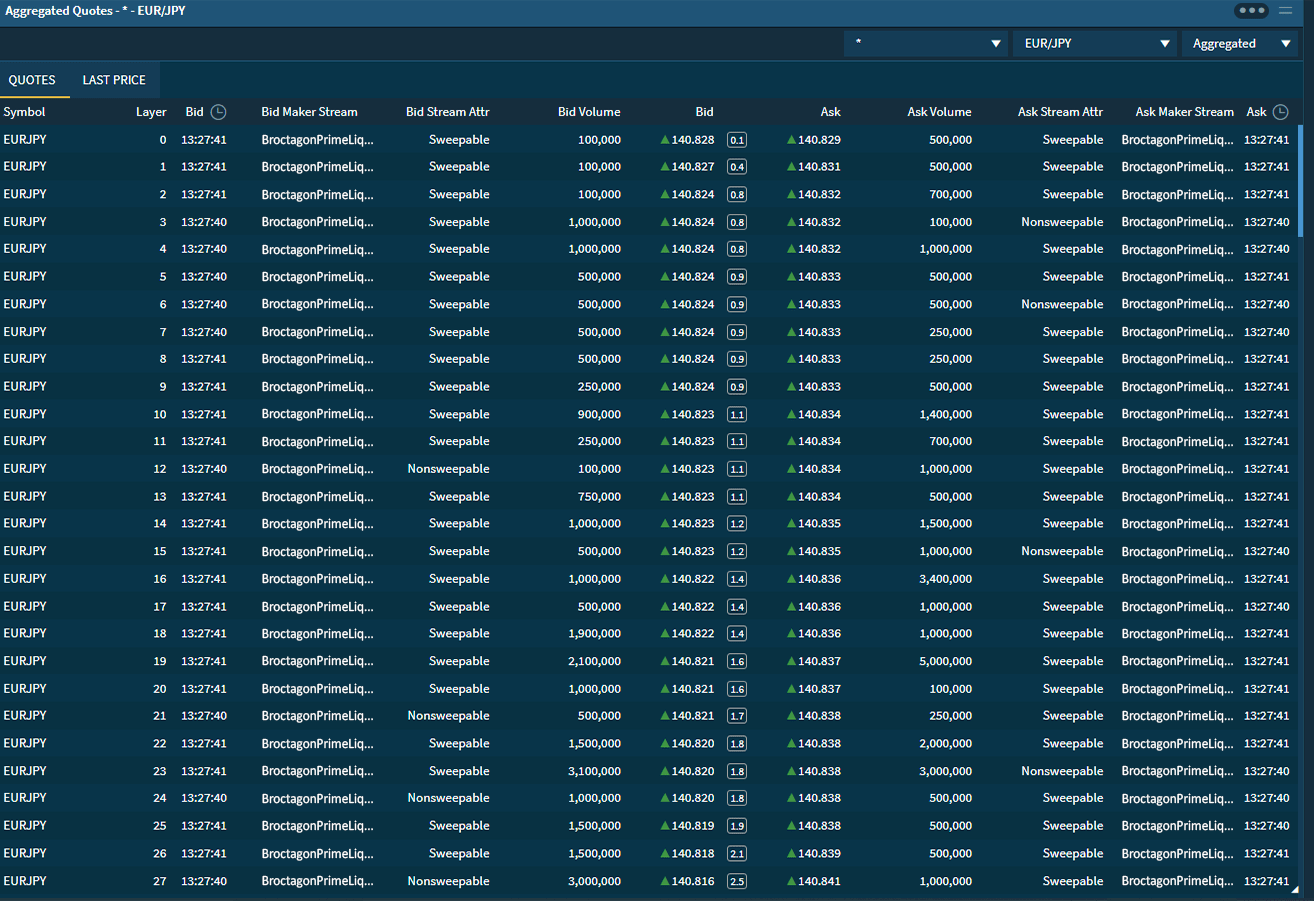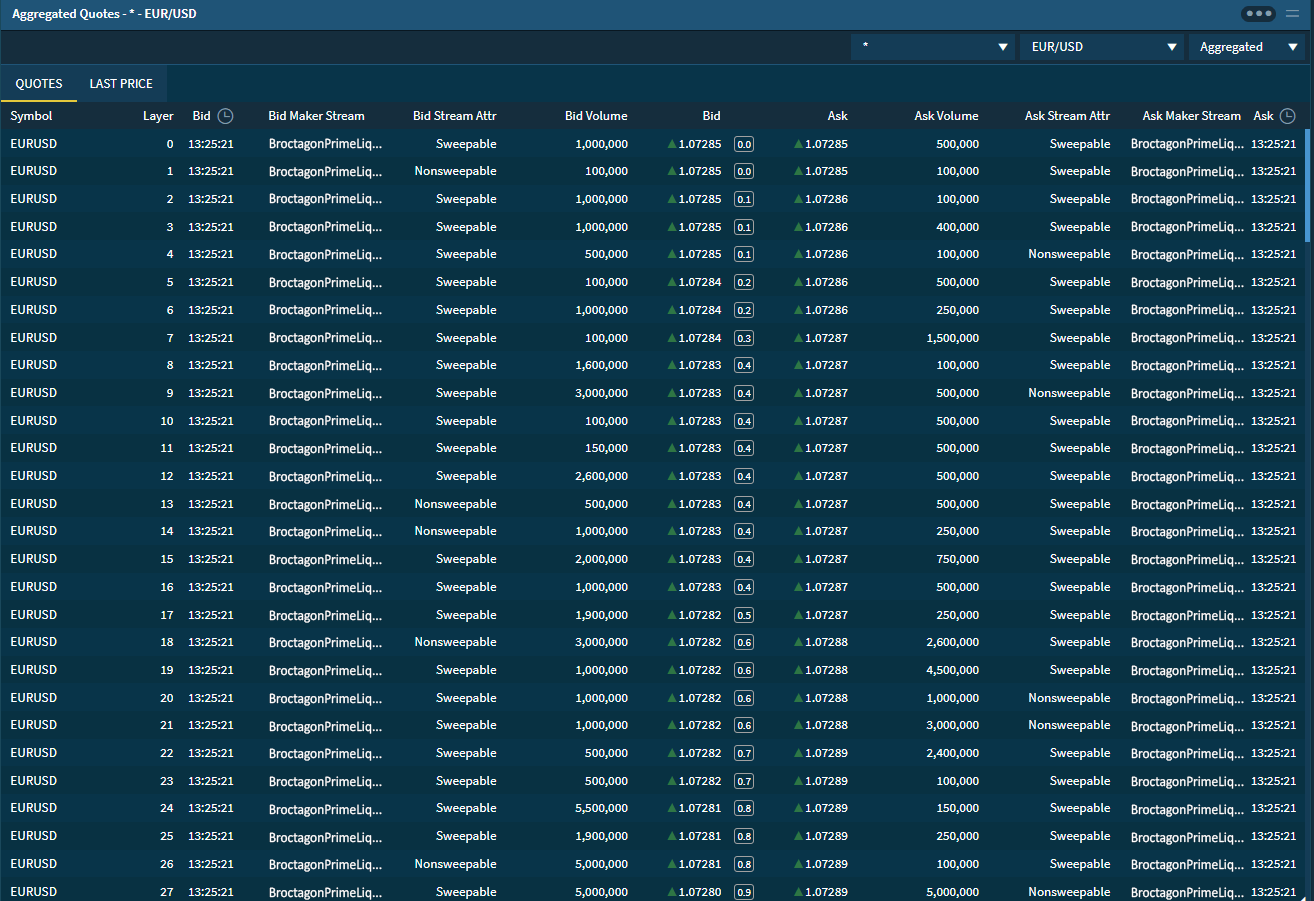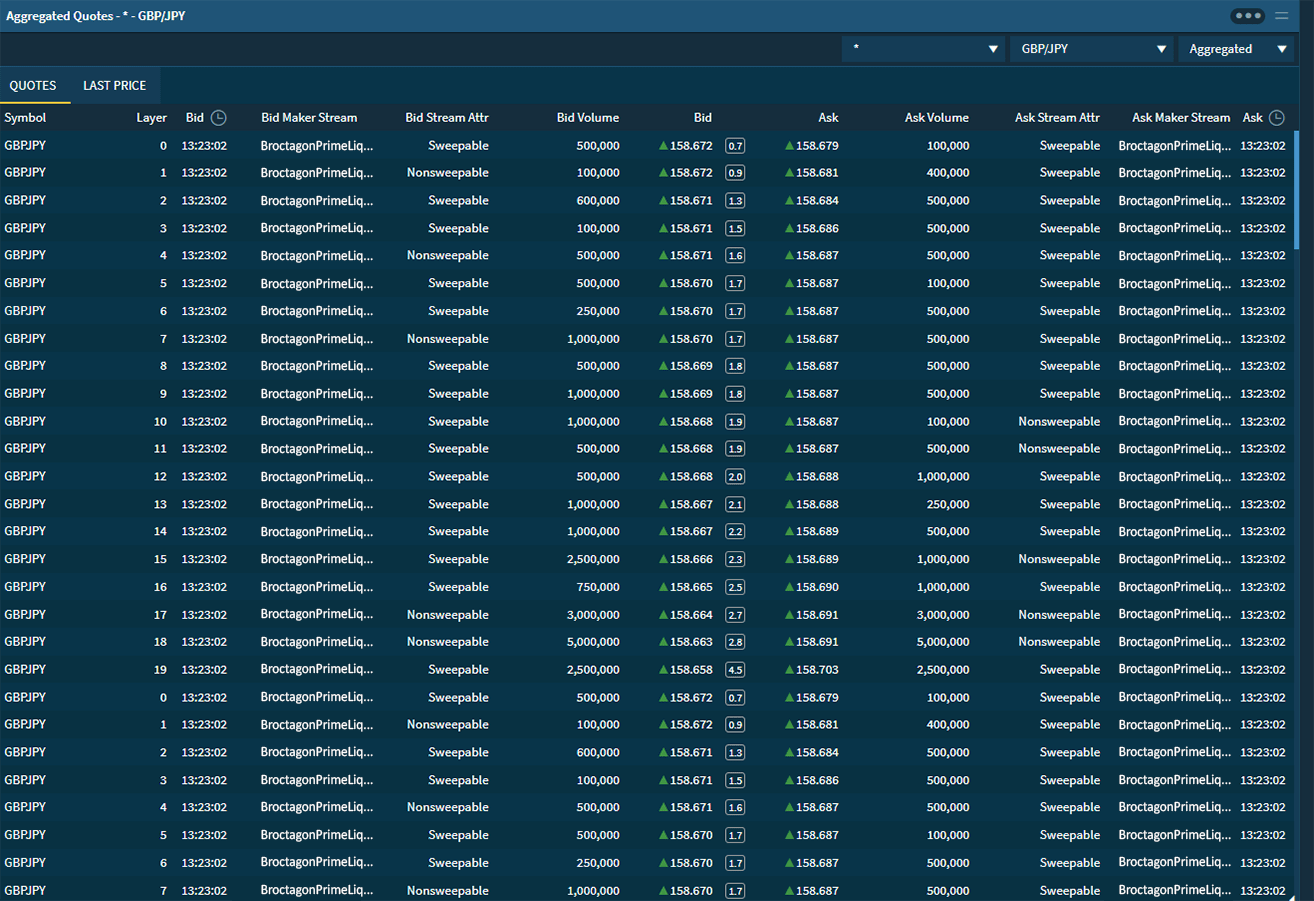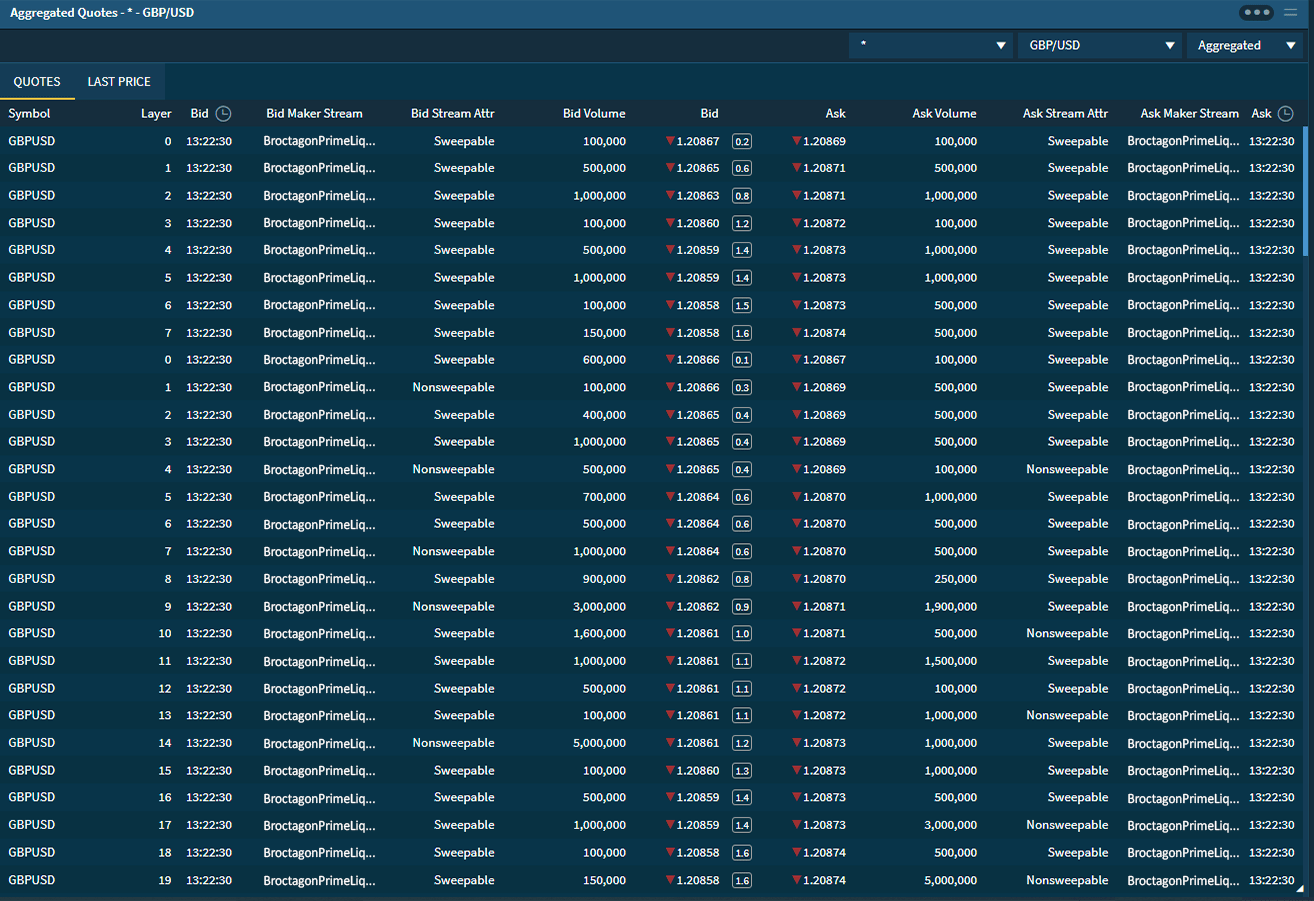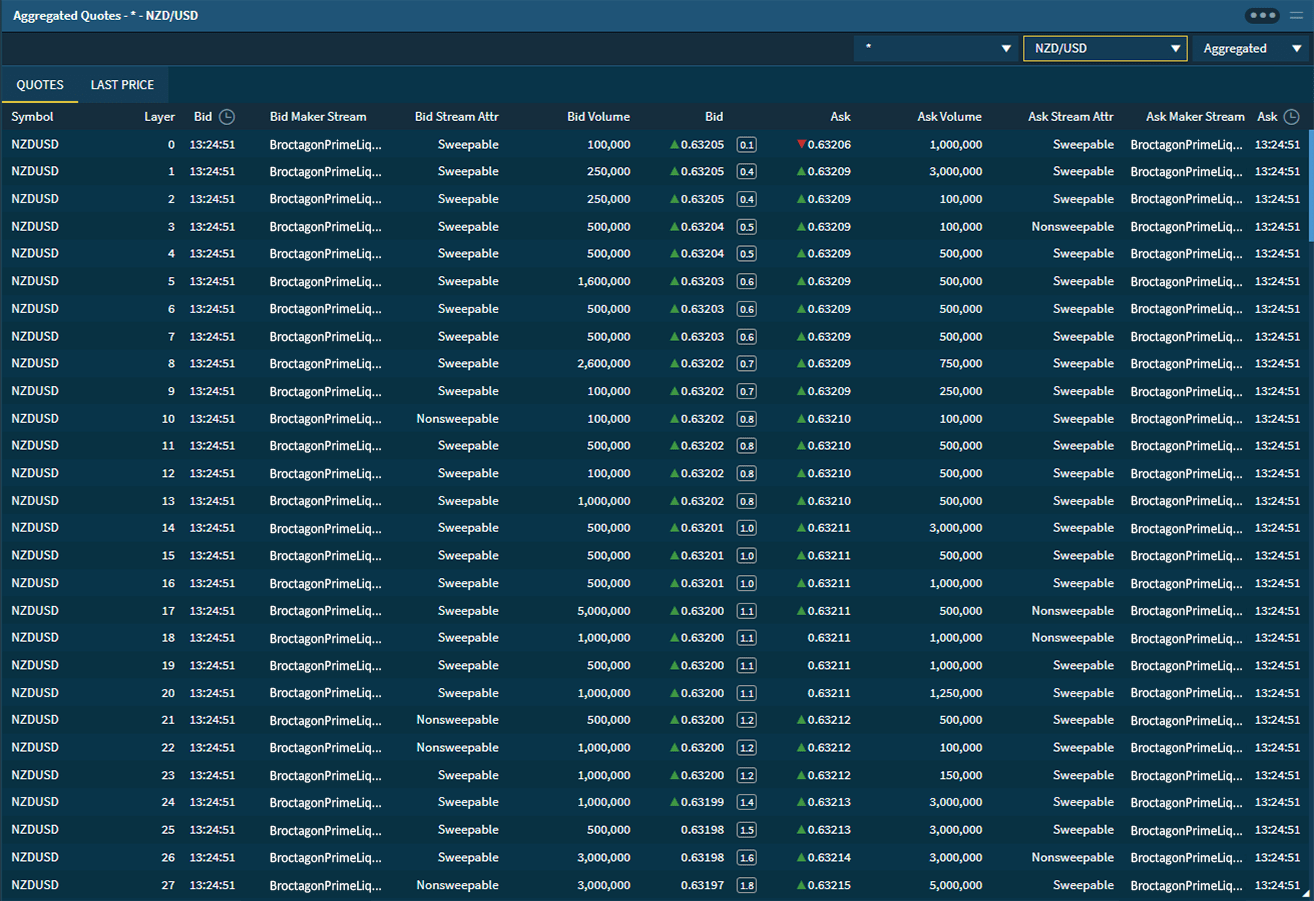Navigating Toxic Flow in FX Trading: A Broker’s Guide
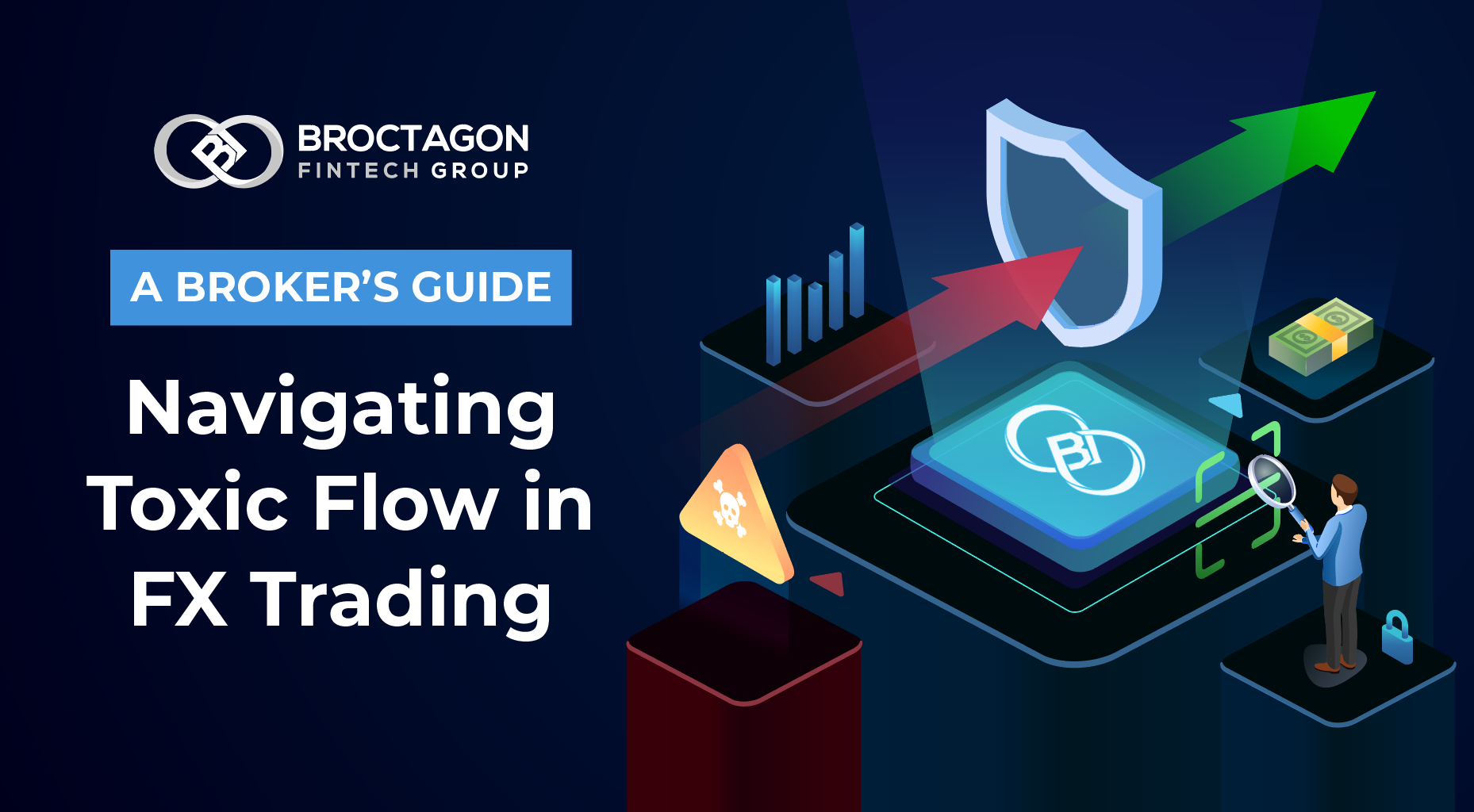
What is Toxic FX Flow?
Toxic flow encompasses trading activities that manipulate or exploit delays, informational asymmetries, or infrastructure gaps. Often executed by arbitrage traders or high-risk trading firms, such tactics can severely affect profitability, execution quality, and liquidity stability. These strategies frequently involve multiple orders, layered positions, and advanced algorithms designed to profit from latency and pricing inefficiencies—undermining the quality of price discovery and making it harder for brokers to offer competitive pricing.
A related phenomenon is sharp flow, a subset of toxic activity involving highly informed trades executed with impeccable timing. Whether driven by superior technology or access to privileged data, such orders frontrun standard pricing mechanisms and are widely considered toxic by liquidity providers.
Combined, these practices distort top-of-book pricing, erode liquidity depth, inflate execution costs, and compromise market fairness and transparency.
Common Types of Toxic Flow in Forex
1. Latency Arbitrage
Latency arbitrage occurs when traders exploit small delays between a broker’s price feed and the actual market price. By leveraging faster technology, they react before the broker’s systems can adjust—making a profit from the price lag with minimal risk.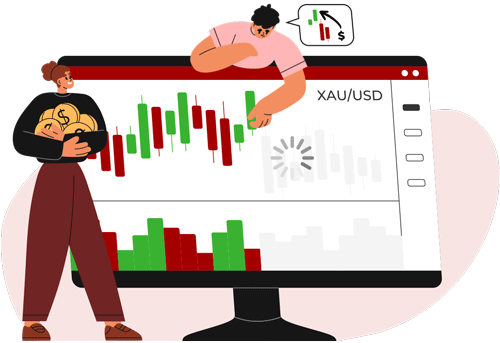
2. High-Frequency Trading (HFT) Exploitation
High-frequency trading (HFT) involves algorithms executing trades within milliseconds to detect and exploit minute price discrepancies. When brokers or market makers are unable to match these speeds, they may be overwhelmed by a rapid succession of trades. This imbalance can lead to adverse outcomes, as prices shift before orders are filled, exposing brokers to increased risk and reduced execution quality.
3. Spoofing and Layering
Spoofing is the act of placing fake orders to artificially stimulate market demand or supply, while layering involves multiple levels of such orders. These tactics manipulate prices and mislead brokers into adjusting their pricing unfavourably.
4. Aggressive Scalping
When scalping is conducted at extreme frequencies, especially during volatile periods, it becomes toxic due to the strain it places on broker systems.
5. Market Information Arbitrage
Market information arbitrage occurs when traders with superior data access exploit top-of-book discrepancies across multiple sources—often outpacing the broker’s pricing or order flow systems. This mismatch creates opportunities for unfair advantage, as brokers struggle to keep pace with real-time market updates.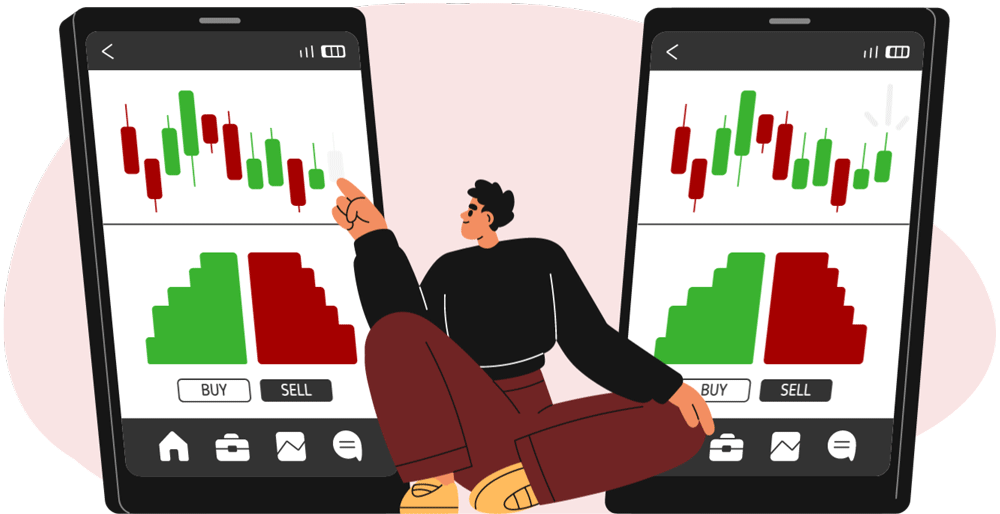
Risk Impact of Toxic Flow on Brokers and Liquidity Providers
1. Operational Strain
Effectively managing toxic order flow requires constant monitoring and real-time response systems—often demanding expensive investments in advanced technology, infrastructure, and skilled oversight.2. Profitability Erosion
Continuous exposure to high-risk, toxic trading practices can lead to financial losses through manipulation tactics such as price slippage, adverse selection, and increased execution costs. Brokers may face challenges like covering unfavourable trades or bearing costs from unanticipated price changes—all of which erode profit margins.3. Reputation Damage
Consistently poor execution—often driven by toxic flow—can damage a broker’s reputation, eroding client trust and ultimately leading to attrition.In fast-growing FX markets such as Southeast Asia—particularly Malaysia and Indonesia—as well as China, brokers face unique challenges due to heightened competition and varying regulatory landscapes, increasing their exposure to toxic flow.
In these dynamic environments, establishing strong partnerships with friendly, tech-driven liquidity providers and market makers is essential. These partners support real-time execution, advanced risk filters, and efficient handling of volatile flow patterns—helping brokers manage risk and maintain a competitive edge.
Market Makers: First Line of Defence Against Toxic Flow
Market makers form the liquidity backbone of FX markets, ensuring smooth trade execution—but they are also prime targets for toxic flow strategies such as latency arbitrage and spoofing. To defend against these tactics, market making entities must deploy real-time monitoring tools, algorithmic surveillance, and latency detection systems capable of identifying and managing high-frequency and manipulative trading behaviours. Just as crucial is close collaboration with brokers to align on risk tolerance levels and refine routing strategies, helping prevent frontrunning and reduce exposure to disruptive flows.
Toxic Flow Mitigation Strategies
1. Latency Detection Systems
Deploying latency monitoring tools enables brokers to detect timing gaps in order flow, helping identify and neutralize arbitrage opportunities while allowing for swift price adjustments.2. Algorithmic Surveillance
Advanced algorithms can detect behavioural anomalies—such as spoofing, multiple rapid orders, excessive quote changes, or high-frequency trading patterns—enabling brokers to identify toxic activity early and mitigate its impact.3. Scalping Controls
Implementing rules that limit trading frequency and volume can help curb the impact of high-speed trades.4. Partnering with Trusted Liquidity Providers
Collaborating with established partners like Broctagon gives brokers access to accurate, real-time market data and robust infrastructure—crucial for maintaining smooth execution even during volatile conditions. These technology-driven liquidity providers not only enhance risk management and monitoring capabilities but also specialize in detecting toxic patterns and handling deep, fast-moving flows while preserving price integrity. Strong relationships with such partners are essential to safeguarding operations and staying ahead of evolving market risks.Ready to Tackle Toxic Flow in Your Trading Operations?
Toxic flow poses significant challenges for brokers in FX trading, impacting profitability and operational efficiency. By understanding various forms—such as latency arbitrage, HFT exploitation, and spoofing—brokers can build effective strategies. At Broctagon, we have a track record of providing cutting-edge technology and liquidity solutions that empower brokers to navigate these complexities confidently.
Let’s connect and discuss how our proven expertise can optimize your trading operations and strengthen your defence against toxic flow, ensuring you stay competitive in the market.
Your content goes here. Edit or remove this text inline or in the module Content settings. You can also style every aspect of this content in the module Design settings and even apply custom CSS to this text in the module Advanced settings.
Glossary
Adverse Selection
Definition: A market situation where one party has more information than the other, often leading brokers to take on riskier trades or experience losses from mispriced trades.
Algorithmic Surveillance
Definition: Advanced monitoring systems using algorithms to detect patterns such as spoofing or high-frequency trading, helping brokers manage and reduce toxic flow risks.
Arbitrage
Definition: A trading strategy that exploits price differences between markets or instruments to generate profit. Toxic flow often involves specific types of arbitrage, like latency arbitrage, which capitalizes on delayed price feeds.
Execution Costs
Definition: The total costs incurred by brokers for executing trades, including slippage, spreads, and any operational fees. Toxic flow can significantly increase these costs.
High-Frequency Trading (HFT)
Definition: A form of algorithmic trading that executes trades within milliseconds. When used for toxic purposes, it leverages rapid price shifts to profit at the expense of slower systems.
Latency Arbitrage
Definition: A form of arbitrage where traders exploit time delays between a broker’s price feed and the actual market price, often using faster technology to secure profitable trades.
Latency Detection Systems
Definition: Tools used by brokers to monitor price feed delays, helping them identify and mitigate latency arbitrage opportunities.
Layering
Definition: A variation of spoofing where multiple layers of fake orders are placed to influence prices, only to be cancelled once the price has adjusted to a favourable level.
Liquidity Provider
Definition: An institution (like Broctagon) that supplies buy and sell prices to brokers, ensuring trades can be executed efficiently in the market.
Liquidity Depth
Definition: A measure of the market’s ability to absorb large trades without significantly affecting the price. Toxic flow can distort market depth, creating artificial price levels.
Market Information Arbitrage
Definition: The act of trading based on access to broader or faster market data than a broker’s price feed, profiting from discrepancies between data sources.
Price Feed
Definition: Real-time data provided by brokers or liquidity providers that shows current asset prices. Delays or lags in price feeds can be exploited through latency arbitrage.
Price Slippage
Definition: The difference between the expected price of a trade and the actual price at which it is executed, often caused by sudden price movements or order delays.
Quote Stuffing
Definition: A high-frequency trading technique where traders flood the market with orders they don’t intend to execute, slowing down competitors and gaining a temporary advantage.
Scalping
Definition: A trading strategy focused on making profits from small price movements, often involving a high volume of short-term trades. In toxic flow, scalping can exploit minor inefficiencies in price feeds.
Spoofing
Definition: A trading tactic involving placing fake orders to create a misleading impression of market demand or supply, often prompting other market participants to adjust their pricing.
Tick Data
Definition: The smallest unit of market data, capturing every single price change or trade. Toxic strategies often rely on analysing tick data to make split-second decisions.
Toxic Flow
Definition: Trading activities that exploit inefficiencies, causing financial losses for brokers or liquidity providers. Examples include latency arbitrage and high-frequency trading exploitation.
About Broctagon Fintech Group
Broctagon Fintech Group is a leading multi-asset liquidity and FX technology provider with over 15 years of global expertise. We empower forex brokers with performance-driven, bespoke solutions — anchored by our flagship AXIS FX CRM, institutional-grade liquidity, and prop-trading solutions. Trusted by 350+ clients in 50+ countries, we deliver the technology that keeps brokerages ahead of the curve.


